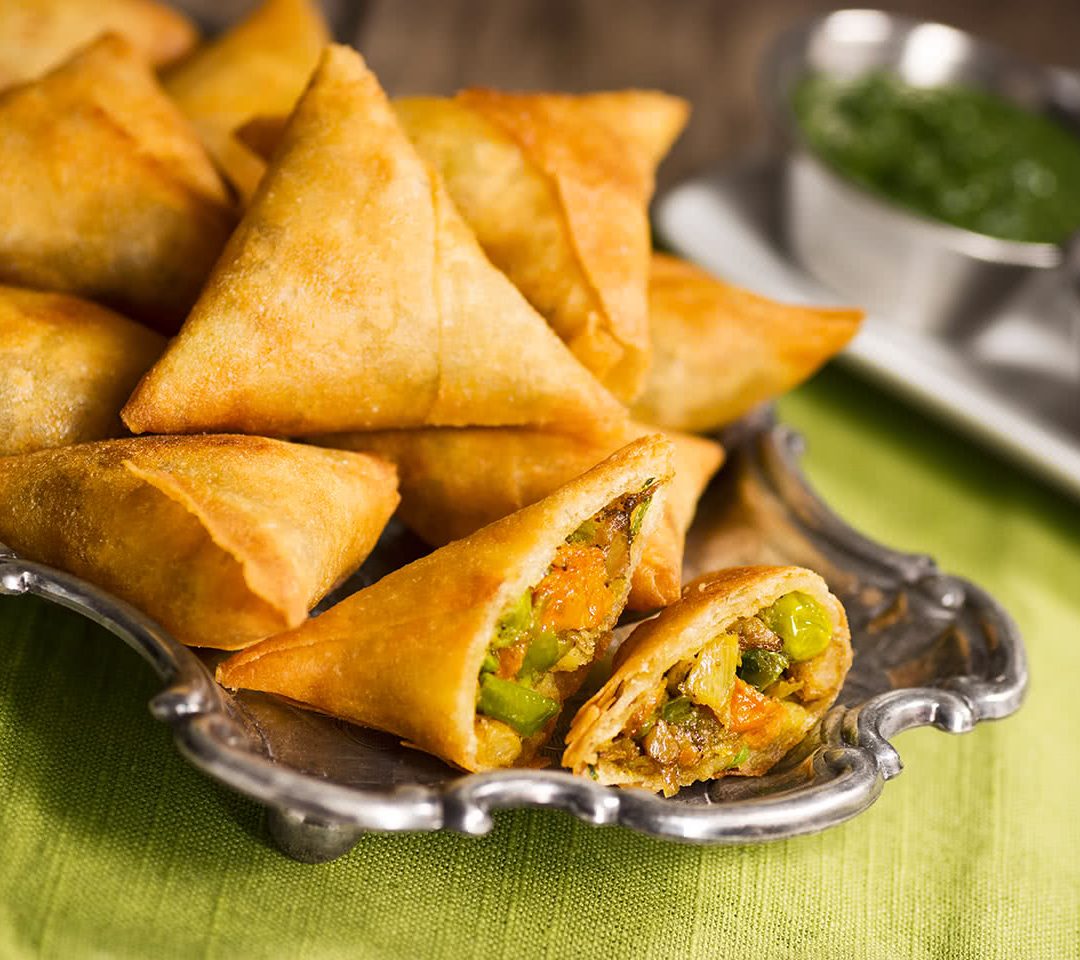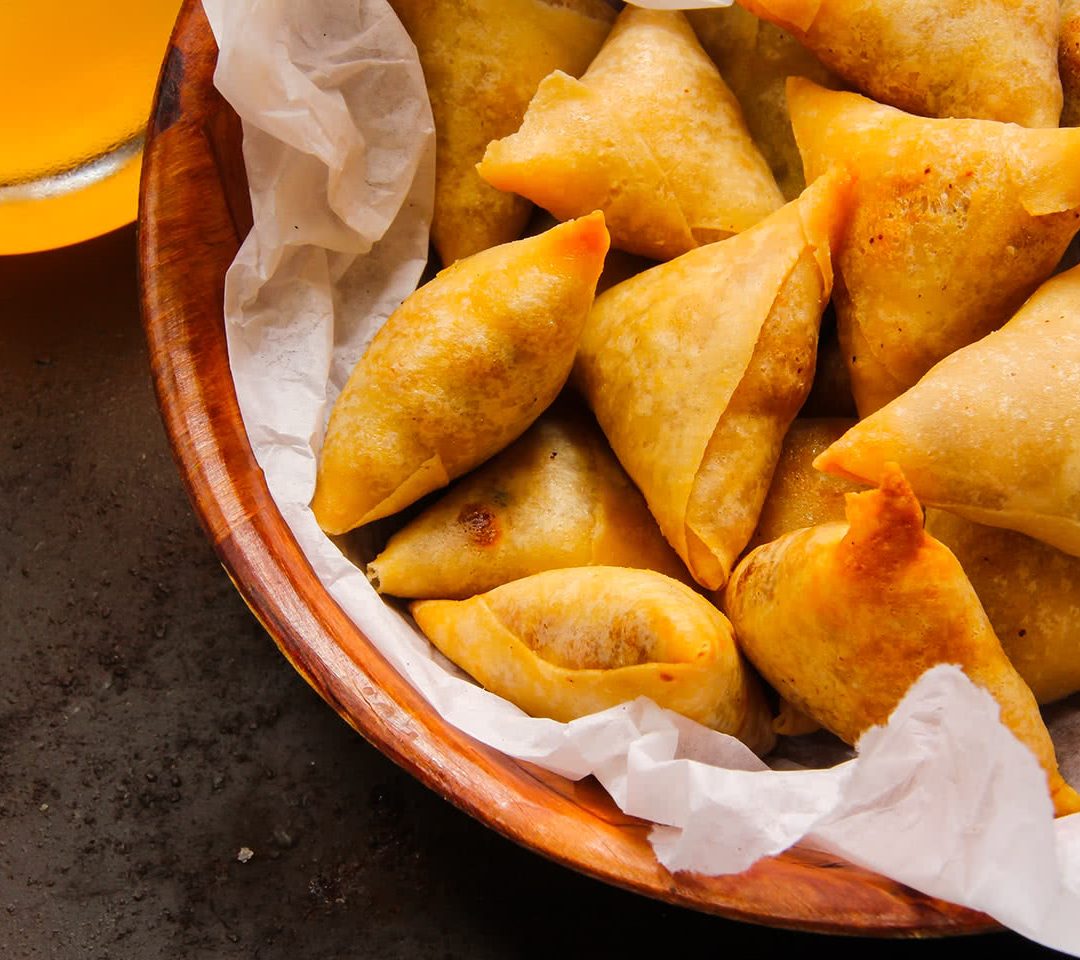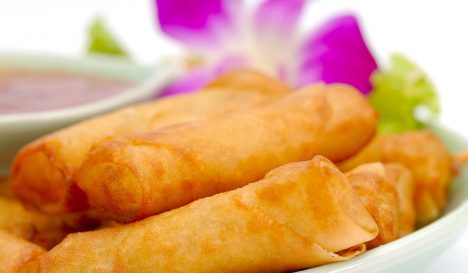Samosa


Samosa
-
Kitchen Indian cuisine
-
Basis Dough / batter
-
For who Small appetites
The dish
The samosa is an Indian crispy dough package, usually filled with vegetables like potato, onions and peas. A samosa is tastiest when the filling has a variety of textures and flavours; soft, crunchy, sweet and savoury. Sometimes it will contain paneer (fresh cheese), but spices like garam masala, ginger and chilli pepper are always present. You can also enjoy samosa with a sweet filling, such as dried fruit.
The samosa does not originate from India at all but was brought to Central Asia and India centuries ago by Egyptian and Libyan commercial travellers. The dough packets could be baked over a campfire in the evening while the travellers were resting, then stored in saddlebags to eat during the onward journey.
The name samosa comes from the Persian word sanbosag, which is said to literally translate as ‘lovely triangles’. There are many countries, from North Africa to Canada, that have their own version of a crispy filled dough package, but the samosa is the best known and most widely made.
In India, not every samosa is the same. The filling, the spice mix and the accompanying side dishes all depend on local ingredients and customs. In Mumbai, for example, a samosa burger (also known as samosa pav) is a samosa served in ladi pav (bread) and is considered street food. In Punjab, however, your samosa will come with channa masala (chickpea curry). In the north, the dough is often filled with minced meat, while in the south, the filling is more likely to be vegetarian and spicy. Even the way the dough is folded can vary from region to region but, no matter the variant, no family gathering is complete without samosas.
Samosas and pakoras are both popular during Ramadan to break the daily fast.
Did you know?
Although anything can be put in a samosa, most versions in India are vegetarian as about thirty per cent of the population eats meat-free. For a meat-filled version, minced lamb is the most usual choice, sometimes mixed with potatoes.
Preparation
A dough of wheat flour, oil, water and salt is kneaded and left to rest. For a classic filling, potatoes are boiled, pounded, and mixed with small cubes of stir-fried onion, carrot, and sometimes cabbage. In addition, breadcrumbs and blanched peas are often added, and the filling is then seasoned with garam masala, ginger and chilli pepper.
After the filling has been prepared, the dough is rolled out and cut into large or small strips. These are then filled and neatly folded – there are many techniques, and each chef will have his or her preferred style – then fried. Samosas can be baked in the oven for a healthier version, but nothing beats a crunchy, slightly greasy, crumbly dough jacket when you’re hungry.
How to eat
Samosas are perfect as a snack, while larger varieties can be served as a light lunch. Delicious when dipped in a chutney of your choice, you eat them from your hand, and they’re designed to be enjoyed on the go.
Try also
Onigiri are rice balls with different fillings, shaped into triangles or cylinders. A portable Japanese snack food, they are often wrapped in nori (seaweed). A Vietnamese version of this sort of fried dough snack is cha gio.








